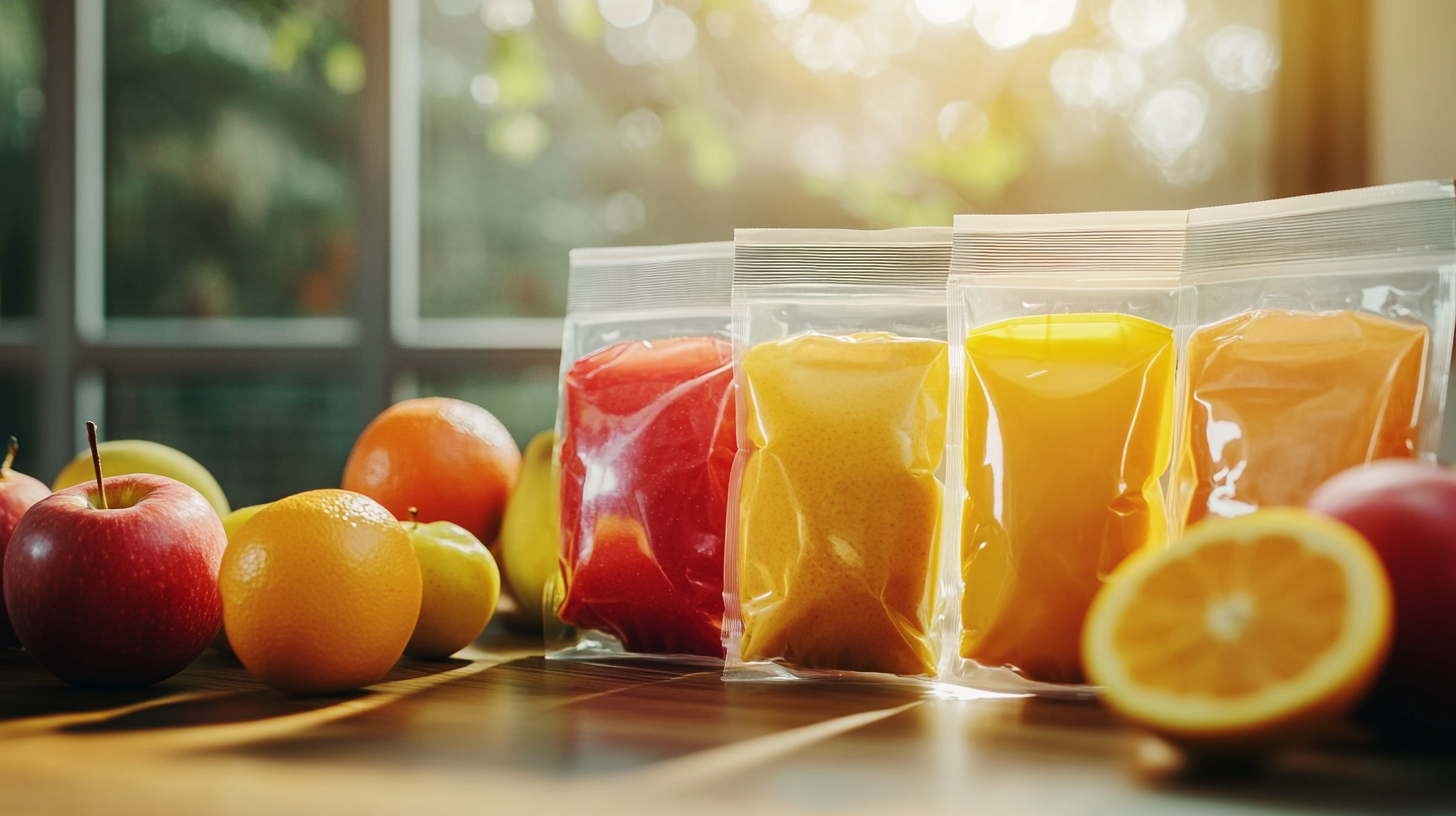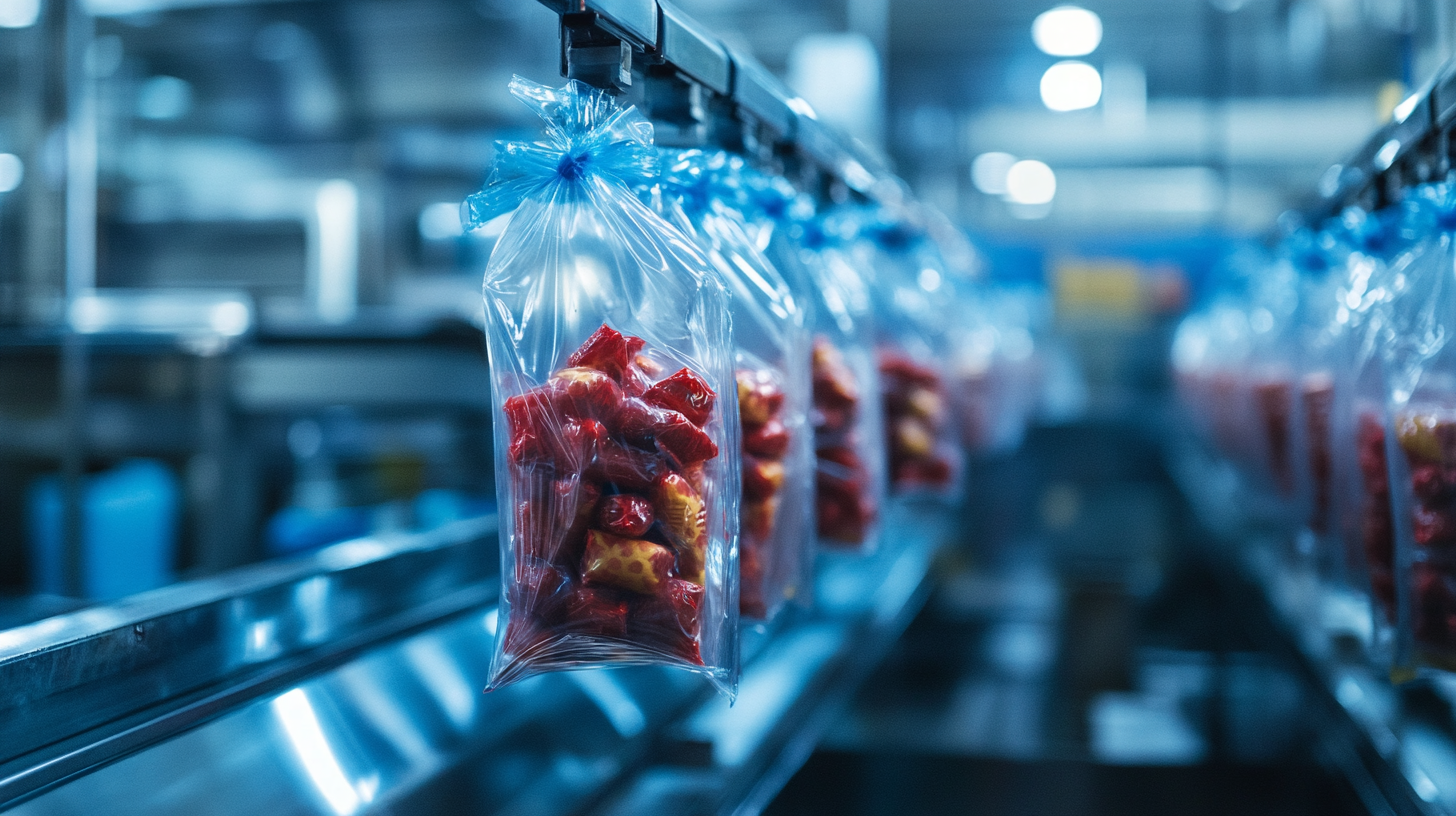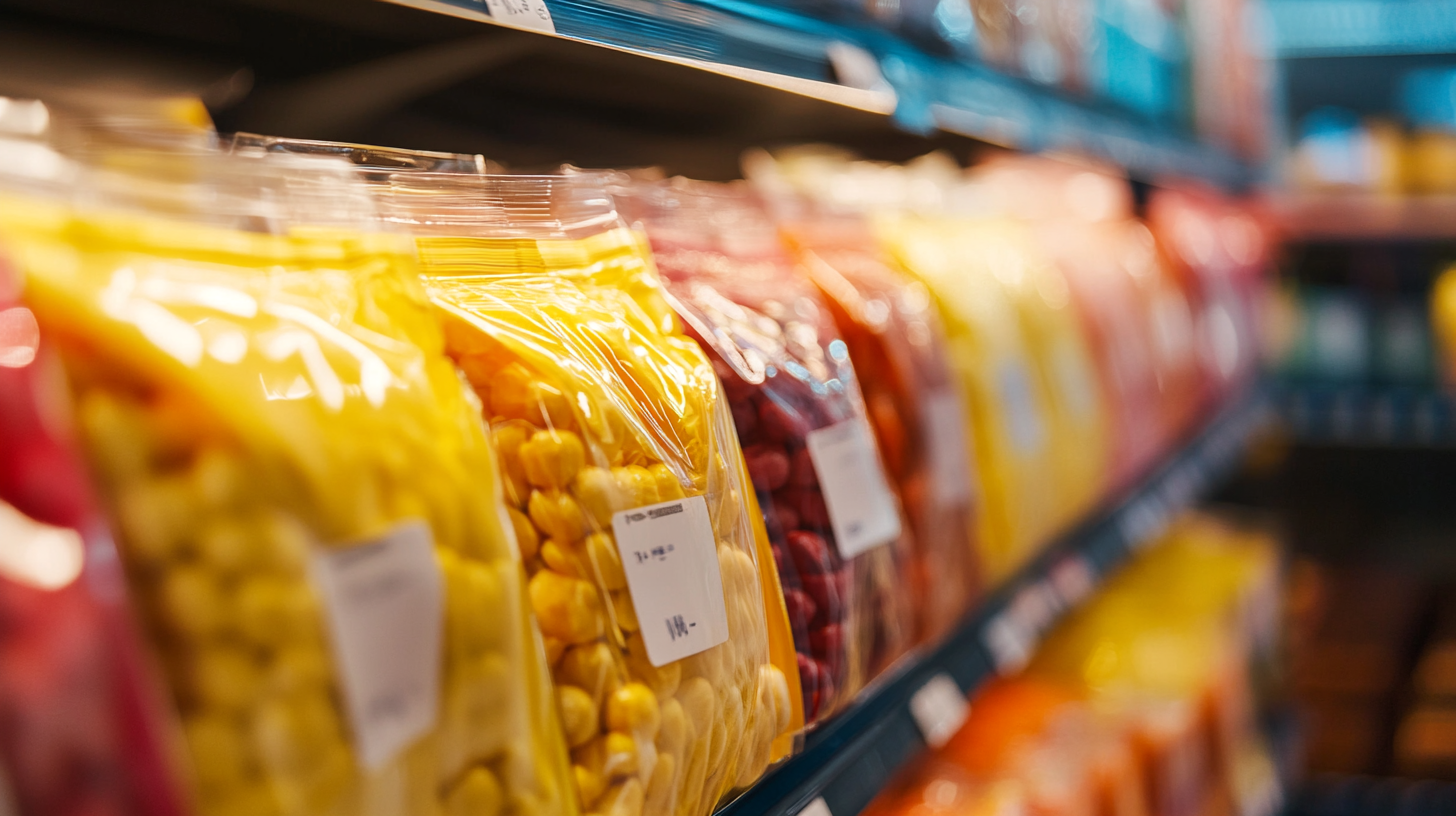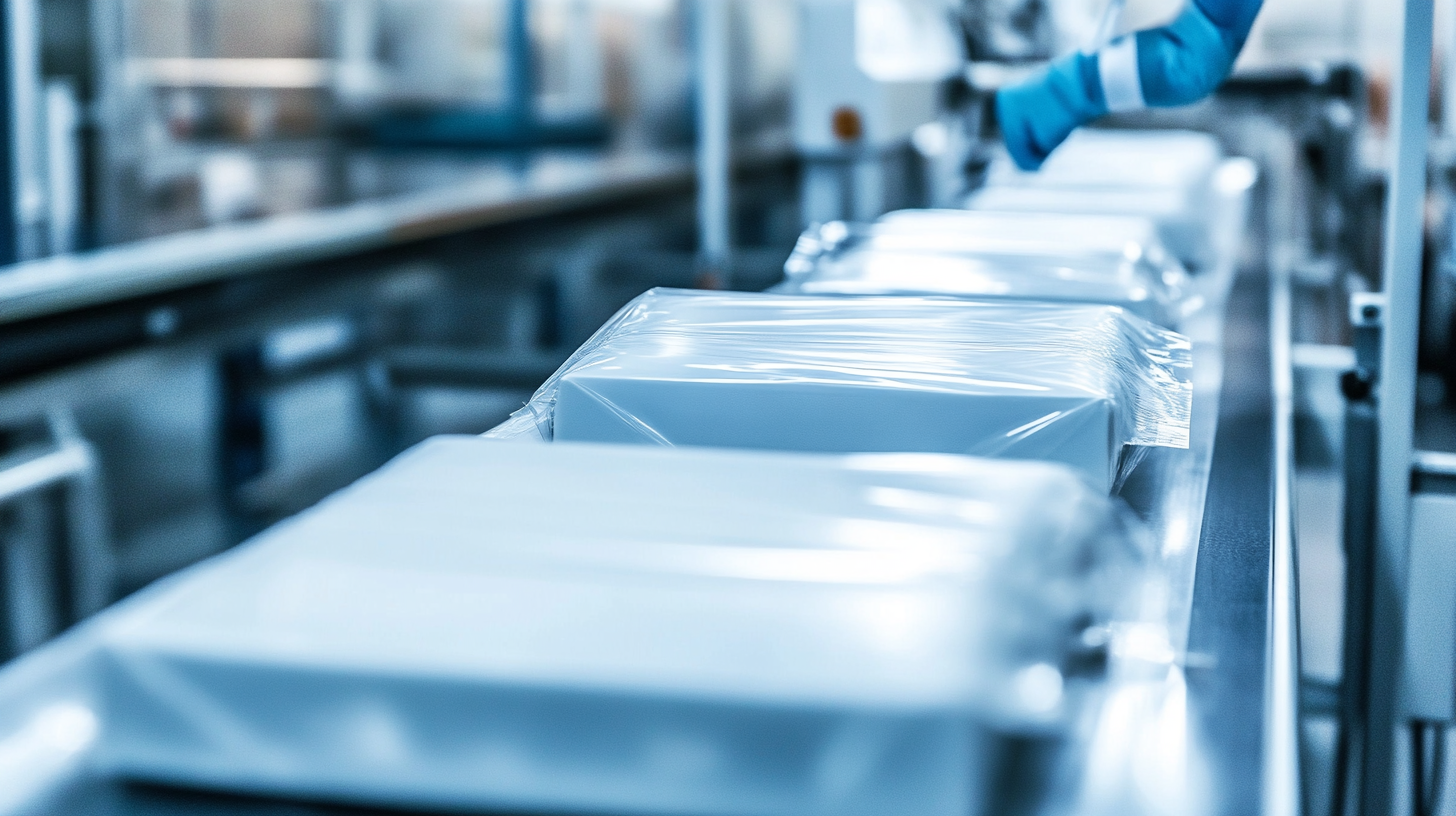ProMach is your partner from start to finish. Our product brands are grouped into distinct business lines that make the most sense to our customers, covering every function of the production line: Filling, Bottling & Capping, Decorative Labeling, Flexibles & Trays, Pharma, Handling & Sterilizing, Labeling & Coding, Robotics & End of Line, and Systems & Integration.
learn moreFuture-Proofing Your Supply Chain: Key Innovations in Pouch Packaging by 2025
Pouch packaging has rapidly triumphed into a key component of future-proofing supply chains, which are struggling to adapt to the fast-changing market environment, according to a Smithers Pira report indicating that the flexible packaging market will grow to $320 billion worldwide by 2025, giving pouch packaging a strong share of the market owing to its versatility and environment-friendly character. The increasing consumer demand for convenience, sustainability, and shelf-life solutions drives this growth. Pouch packaging is lightweight and space-efficient, with higher barrier-value solutions designed for various product ranges, from snacks to liquids.
In addition, technologies like biodegradable materials and smart packaging have begun to change the pouch packaging landscape. According to research by MarketsandMarkets, the smart packaging market is expected to grow to about $40 billion by 2025, opening a big space for innovative designs of pouches with added features of QR codes, temperature indicators, etc. By investing in these key innovations, businesses will maximize consumer engagement while minimizing waste and operational inefficiencies along their supply chain networks. This blog will discuss the trends in pouch packaging that will transform logistics and supply chain strategies until 2025.

Emerging Trends in Pouch Packaging for a Resilient Supply Chain
The pouch packaging sector is therefore expected to undergo immense transformation by the year 2025, propelled by trends keen to build supply chain resilience. One of the dominant trends is the increasing use of sustainable materials. The recent report by Smithers Pira indicates that the global sustainable packaging market will touch $500 billion by the year 2025 with pouches taking a large share in that transition. Brands are now looking to reduce their environmental footprint and answer consumer calls for sustainable products, with compostable and recyclable pouches in product design being the priority. Besides going green, pouch packaging is undergoing a technical revolution. Smart packaging solutions allow traceability and inventory management activation through QR codes and blockchain technology. According to MarketsandMarkets, the value of this smart packaging market will grow from $29.85 billion in 2020 to $45.03 billion by 2025. Incorporating smart features in pouch packaging will enable companies to enforce supply chain logistics through tracking, ensuring that products are in good condition through their life cycle. Furthermore, increased e-commerce is determining pouch packaging design and use. Basically, with online sales hitting the roof, pouches that are light and durable and save space are coming to the forefront. The Flexible Packaging Association says that the flexible packaging segment, currently including pouches, will be going at a CAGR of 4.1% until 2025 to answer for the need for easier shipping, lowering costs, and increasing convenience for consumers. As brands adjust to ever-changing market dynamics, pouch packaging innovation will go a long way toward strengthening supply chain resilience in the future.

Sustainable Materials: Innovations Driving Eco-Friendly Pouch Solutions
Coming to 2025, pouch packaging has increasingly become crucial in terms of supplying sustainable materials in supply chains. This trend has manifested itself in the development of biodegradable plastics that have been showcased at the CHINAPLAS 2025 fair, which has indicated a considerable direction towards an environmentally friendly option. For example, Guangdong Kuka Haina New Materials Technology Co. claimed that their partially though completely biodegradable plastics can revolutionize packaging materials in regard to environmental effect reduction. Indeed, this conforms to the global indications that the market for eco-friendly food packaging products is expected to hit USD 199.7 billion by 2024 and to grow at an annual average growth rate of 6.6% from 2025 till 2034.
Emerging green energy companies are set into effect by giants such as WANHUA Chemical to promote the application of sustainable materials. Projected have placed the risk in terms of a refined carbon footprint -79% from its current value-to consumer preference, from which 89% of preferred end users are inclined towards more sustainable products, momentum sparks new innovation from brands in packaging. Innovative ideas include the use of recycled input for producing non-toxic products with great promise for pouch packaging which brings it into competition with potentially sustainable markets.
These changes complement that of introduction of vertical farming concepts, which further amalgamate supply chains into the sustainable practices. Projects implemented by institutions like Xi'an Jiaotong-Liverpool University are paving the way as pioneers in showing the combined sustainable future of agriculture and, therefore indirectly, products packaged using sustainable mechanisms. The signals of innovation towards making the packaging industry more sustainable and responsible come as we near the year 2025.

Smart Packaging Technologies: Enhancing Supply Chain Efficiency
As we move towards 2025, efficiency in supply chains is witnessing increased demand, hence making smart packaging technologies a major area of innovations. As stated by a new report from Smithers Pira, the global smart packaging market is projected to reach $31 billion in 2024, growing at a compound annual growth rate (CAGR) of 7.4%. Growth can largely be attributed to developments in electronic and sensor-enabled packaging that enhance logistics, inventory management, and product traceability.
Smart packaging enables supply chain efficiency with the application of RFID (Radio Frequency Identification), QR Codes, and NFC (Near Field Communication). These technologies facilitate the tracking of goods in transit, giving businesses key information on temperature excursions, shelf life, and potential tampering. According to a Research and Markets study, RFID technology alone might reduce supply chain inefficiencies by as much as 30% through better tracking and reducing the chances of losing items.
Further, sustainable smart packaging solutions have emerged as imperative inputs for future supply chains. The request for eco-friendly materials is inducing brands to take up innovations that help reduce environmental and enhance functional performance. For example, biodegradable materials integrated with smart technology can alert distributors before products expire. This allows timely interventions for reducing waste. In the coming years, with many companies looking forward to aligning with sustainability commitments, smart packaging technologies will act as bottom holes in ensuring resilient and efficient supply chain systems.

Leveraging Automation in Pouch Production and Distribution
Huge changes are ramping up into the field of pouch packaging in the coming years via the processes of automation in production and distribution. When companies wish to up efficiency and minimize operational costs, availing automated systems becomes a determining factor. Automated machinery for pouch filling and sealing boosts the production lines to ensure a quick response from manufacturers to market needs without quality compromise. Loss of human error prevention and a requirement for more stringent adherence to safety and hygiene standards in contemporary packaging would follow.
In addition to this, ponch packaging reaches further into the distribution phase. Advanced logistics management system implementation creates an optimum flow from the point of manufacture through the point of consumer delivery in the supply chain. Current implementation of automated inventory tracking and smart warehousing systems provides an accurate forecast of demand and stock levels as it allows real-time accessibility to data in business. This scenario means short lead times and possible cheaper transportation costs, hence developing a supply chain that best fits the ever-changing consumer behavior.
With automation in production and distribution, one can claim pouch packaging is also very efficient and flexible with future market requirements. 2025 will be a time that will witness people with huge competitive advantages in the market through investments in the innovative automated technologies. It is practically going to pave the way for sustainable growth amid market fluctuations.
Future Challenges: Preparing for Changes in Consumer Demand and Regulations
With an approach to the year 2025, consumer demand and regulatory frameworks constantly change and pose supply chain challenges, especially in pouch packaging. Out there today, consumers are ever more concerned about sustainability and convenience. Eco-activism demands that firms adopt innovations appealing to these interests, using pouch packaging for its lightweight and space- saving features, with additional focus on the possible use of biodegradable or recyclable materials. Companies that can foresee and respond to these changes will have a competitive advantage.
Nevertheless, regulations are getting stiffer around the globe, alongside shifting consumer preferences. Packaging waste policies, including the European Union directives on single-use plastics, are forcing manufacturers to scrutinize their supply chain practices closely. Compliance will mean more than achieving a standard; it will necessitate an approach stressing smart design and responsible sourcing for the pouch packaging area. Visionary companies will invest in R&D looking toward new materials and processes that correspond as much to regulatory enforcement as customer expectations.
The conjunction of these trends emphasizes that supply chains must be dynamic. Companies must consider developing suppliers along with their sustainable and innovative path. This agile foresight in operations would give businesses a chance to future-proof their supply chains against the inevitability of change, remaining in step with the evolving market.